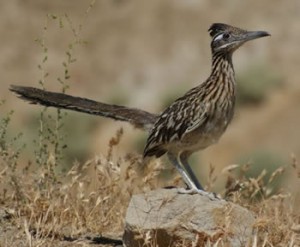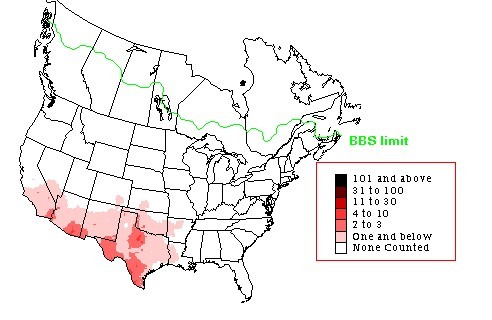Seeing a roadrunner is not an everyday kind of event in my neck of the woods.

The Geococcyx californianus as they are scientifically known aren’t completely alien to the pine forests of East Texas, where I was raised. Neither are roadrunners completely foreign a little south of the Pineywoods, in what is the Big Thicket area and into the coastal plains of Southeast Texas where I currently reside.
Scientists who study these sort of things say these speedy ground-dwelling cuckoos have been found in each of the 254 Texas counties. The North American Breeding Bird Survey shows the roadrunner habitat through most areas of the Southwest U.S. and into areas of states bordering Texas. This is in conjunction with the areas of northern Mexico where one may also find these birds.

The map provided by the Breeding Bird Survey (BBS) — a U.S. Geological Survey/Environment Canada effort — shows that one is most likely to see a roadrunner in the Chihuahuan Desert, the North Texas plains and the Rio Grand Valley in Texas as well as the Sonoran Desert in California. But other than a two or three day adventure in Big Bend National Park — in the heart of the Chihuahuan — the only roadrunners I have ever seen were in the wooded areas of eastern Texas.
Sometimes called the chaparral or chaparral cock, this cuckoo is pretty damn smart when it comes to ferreting out the sustenance it needs to survive and doing so just about wherever it needs to survive. The first roadrunner I saw was while riding to a picnic with my neighbor kids and their mother. We kids recognized the bird, of course, because the “Roadrunner” cartoons had recently begun its run on network TV. Folks around the area where I grew up said the first such birds they had seen were sometime in the 1940s or 1950s. The birds actually spread pretty rapidly because of the changes in land use. Whether that growth has stopped or slowed down, I don’t know. But the BBS map shows that they haven’t traveled very far from eastern Texas. Once again, the physical terrain and vegetation, whether changed or not, probably is the major factor.
I have to admit that the roadrunners are curious-looking, as well as curious-acting, feathered fellows. I think they are quite majestic and quite handsome even though its long legs and neck do somewhat resemble the flightless ratites. The major difference between the chaparral and ratites such as the emu is that roadrunners are capable of a weak effort at flying. As for photogenic, I’d have to say the roadrunner wins hands, or feet, down. And while the emu is not generally given to aggression they are apt to cause humans to hurt themselves as the “smarter creature” takes flight. The good old roadrunner just takes off instead of fooling with humans. Then again, I have had strange encounters with emus. I think I will just leave it at there, for now at least.
Although I certainly hold no claim as an expert on roadrunners, I can say without reservation that I’ve never hear them utter sounds such as “meep meep.” Also, since coyotes can be found just about anywhere I wouldn’t draw any conclusions.

Comments are closed.